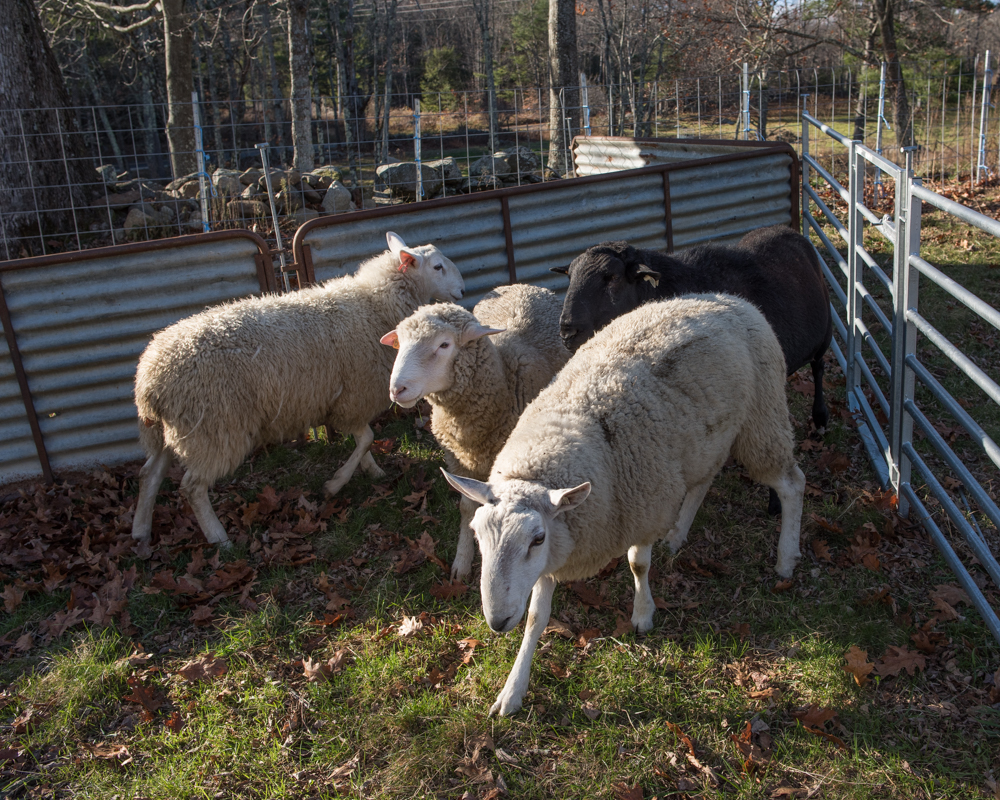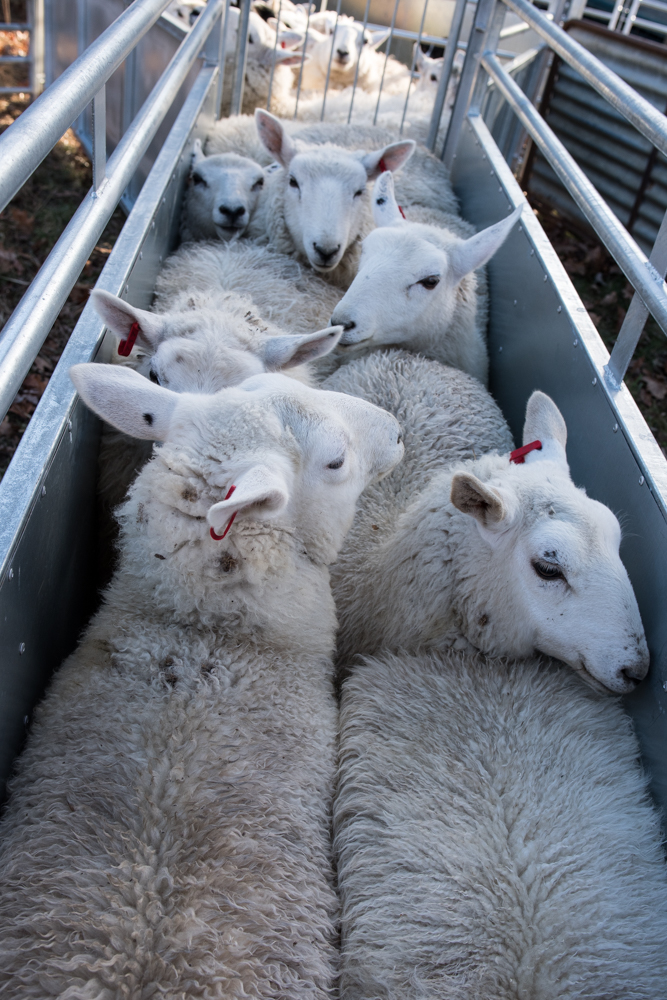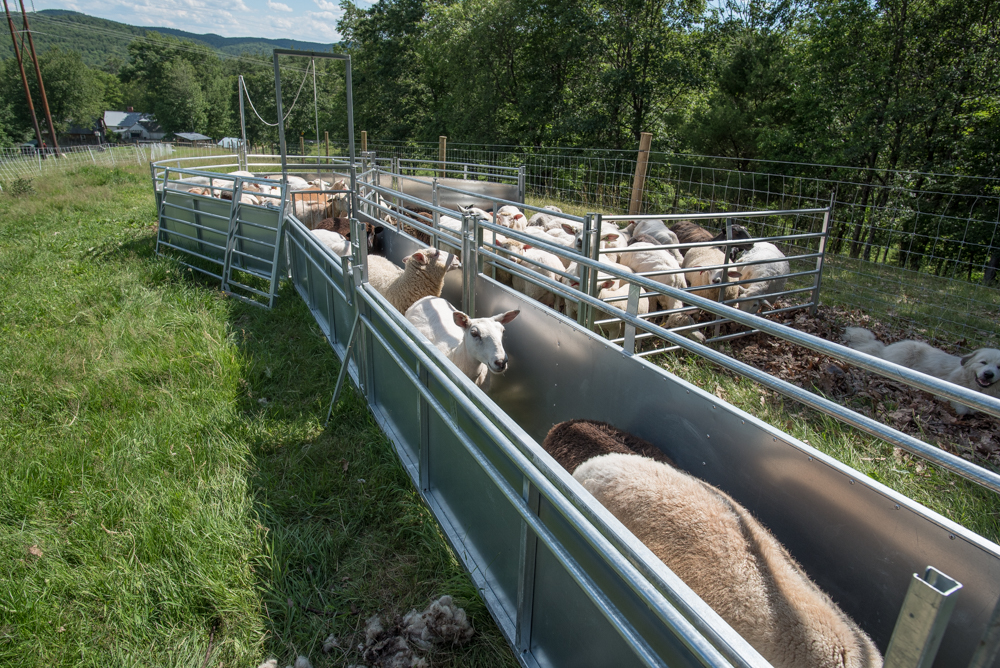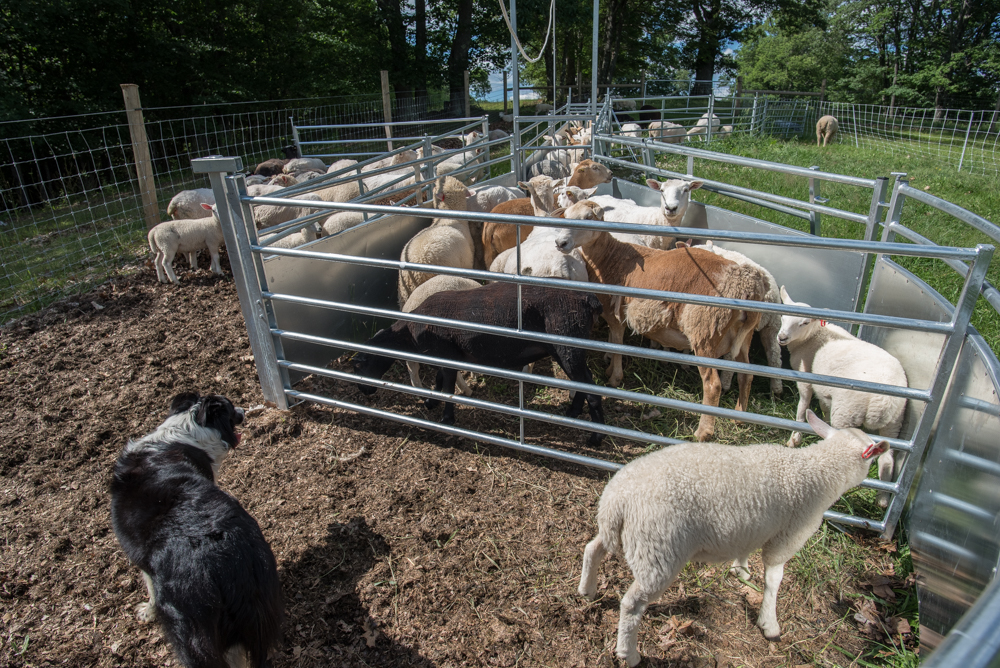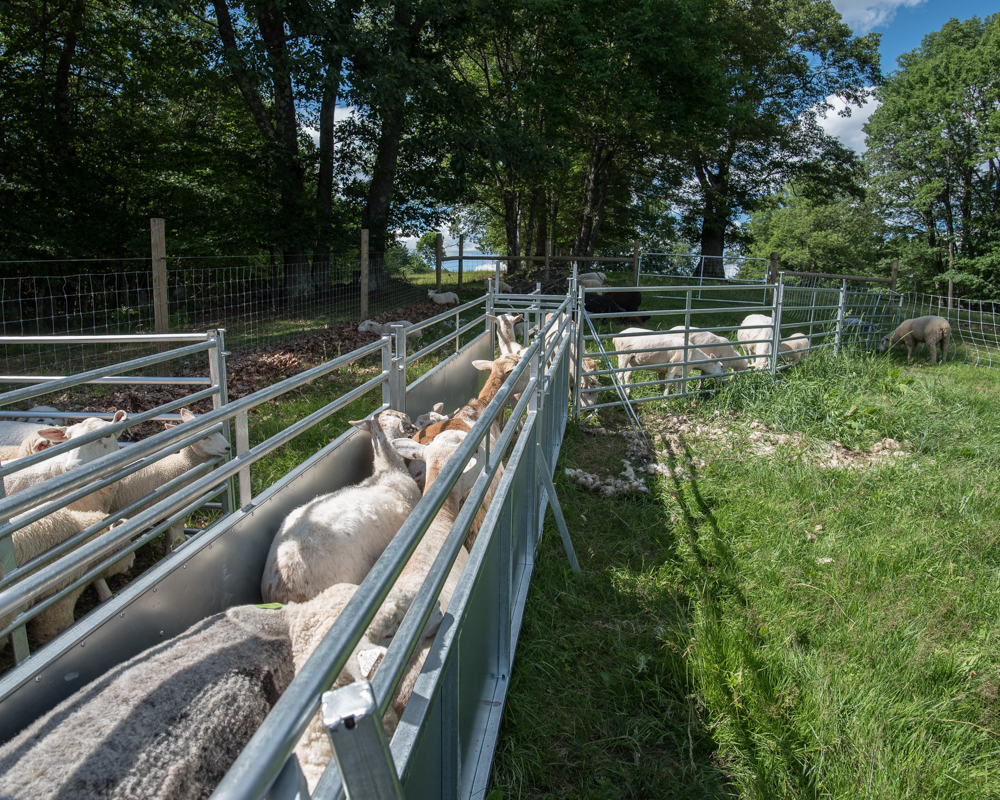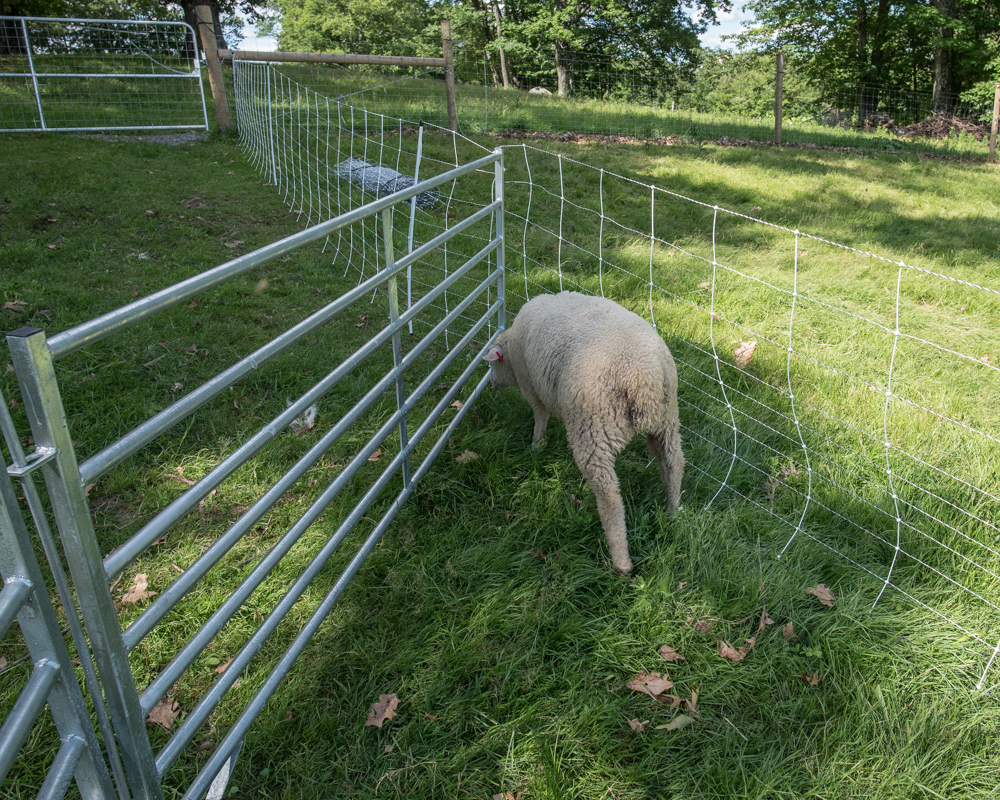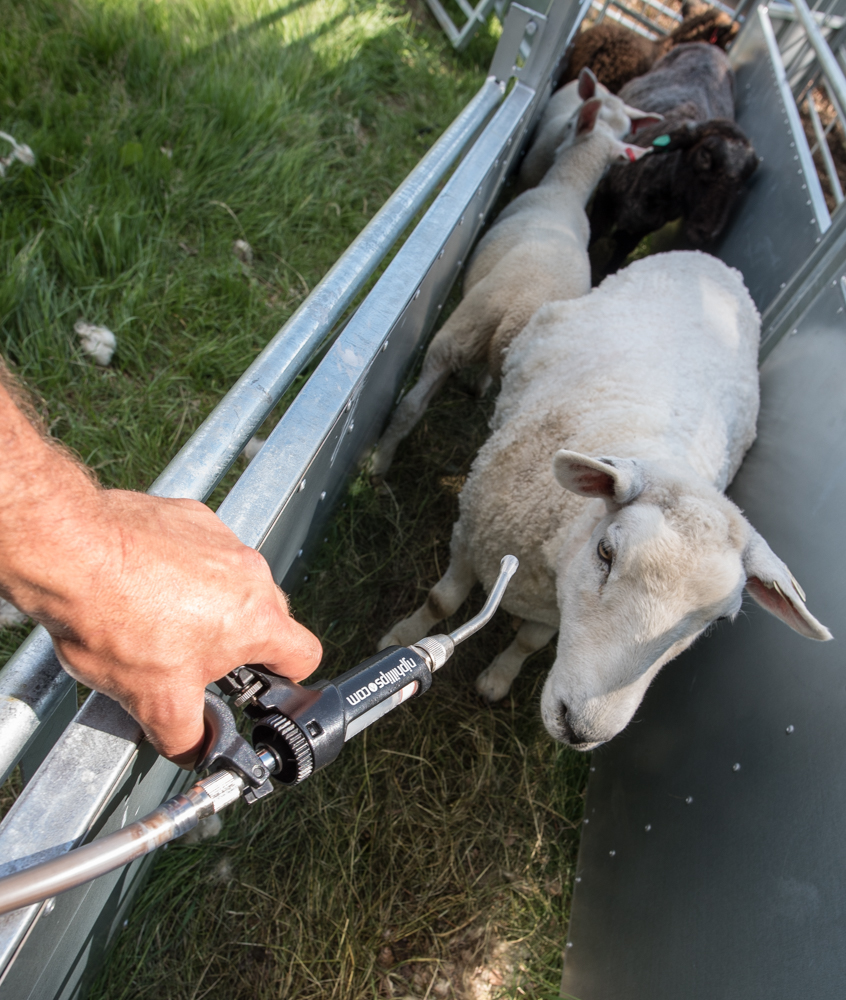Sometimes nature has a keen sense of irony. On Friday I was walking through the lamb group during a little snow squall, and I noticed coarse snowflakes on a pile of lamb poop.
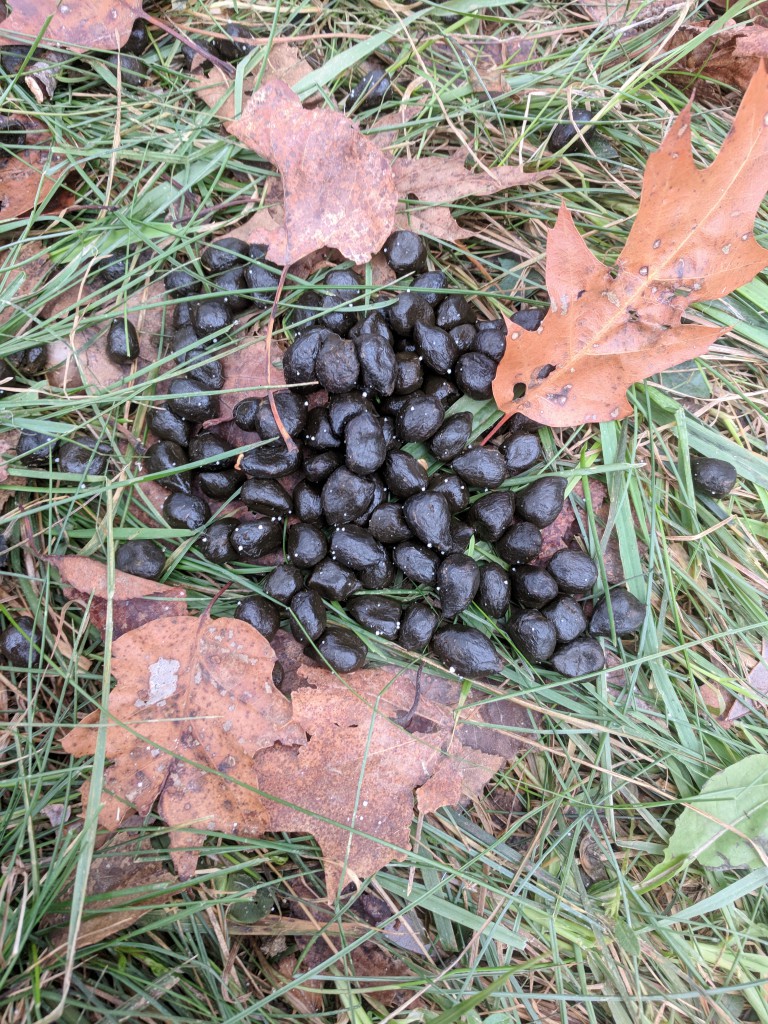
Bill had taught me earlier this year to look carefully at lamb poop for shed tapeworm segments, a sign that they have an infestation I need to treat. The snow-on-dung scene looked enough like tapeworm that I sent Bill a jokey text with the image, calling out the white spots as “not tapeworm.” So when Bill came over to walk the farm with me on Saturday, I was a little horrified to see actual tapeworm segments on the lamb poop.
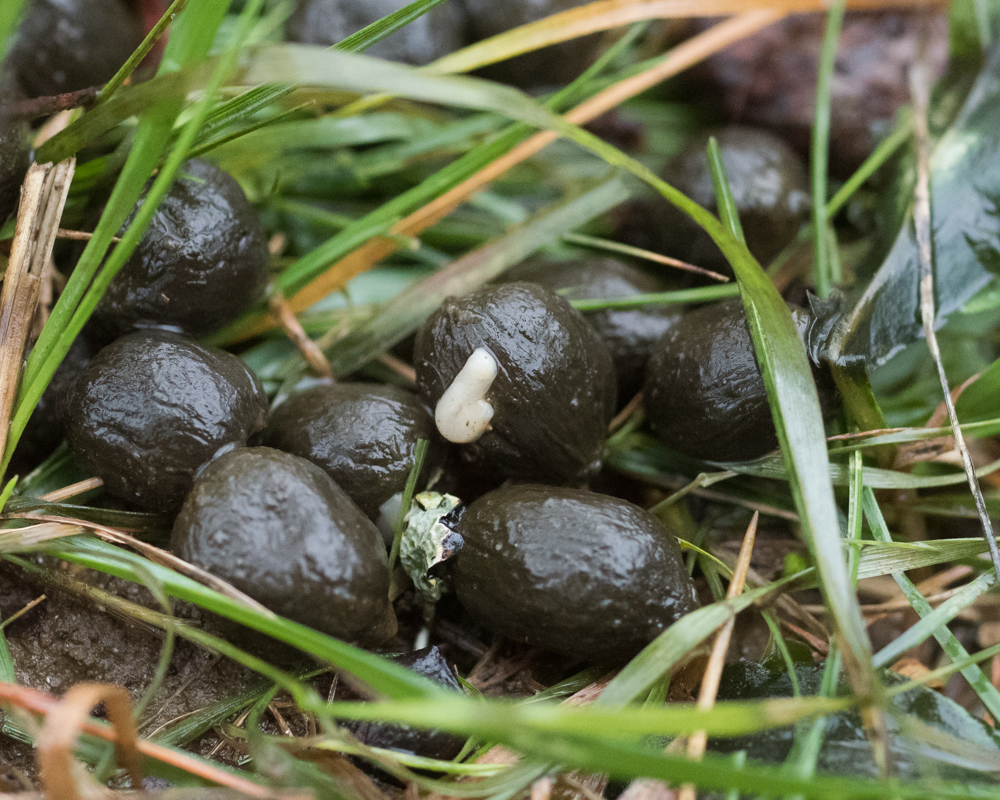
I really want to believe that the tapeworm had just appeared, to acquit me of the crime of Not Looking Carefully. Bill suggested that this could actually be the case — the dewormer I used last week (Levamisole) to treat the poopy butts isn’t effective against tapeworm, and eliminating other intestinal parasites can clear the way for a latent tapeworm infestation to proliferate, once the competition is gone. Regardless of the time course of the infestation, Bill suggested I treat the lambs with a dewormer that is active against tapeworm (Albendazole) as soon as possible.
So this afternoon I rounded up the lambs once again to push them through the handling system. My friend Deb, who agreed to help with the lamb wrangling, also documented the fun. I used Chloe to gather the lambs and move them in to the handling system.
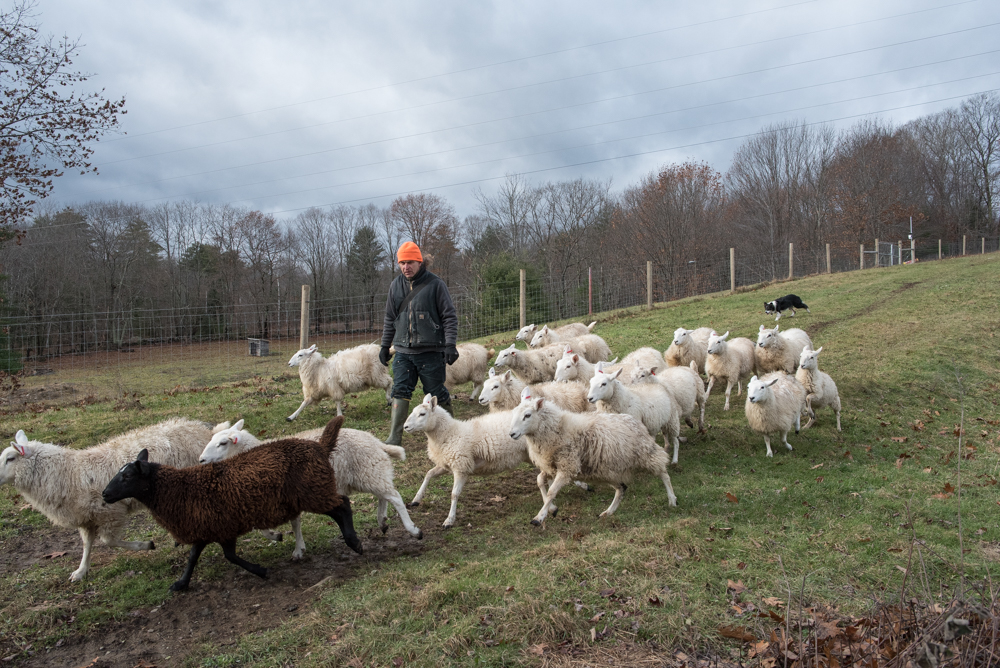
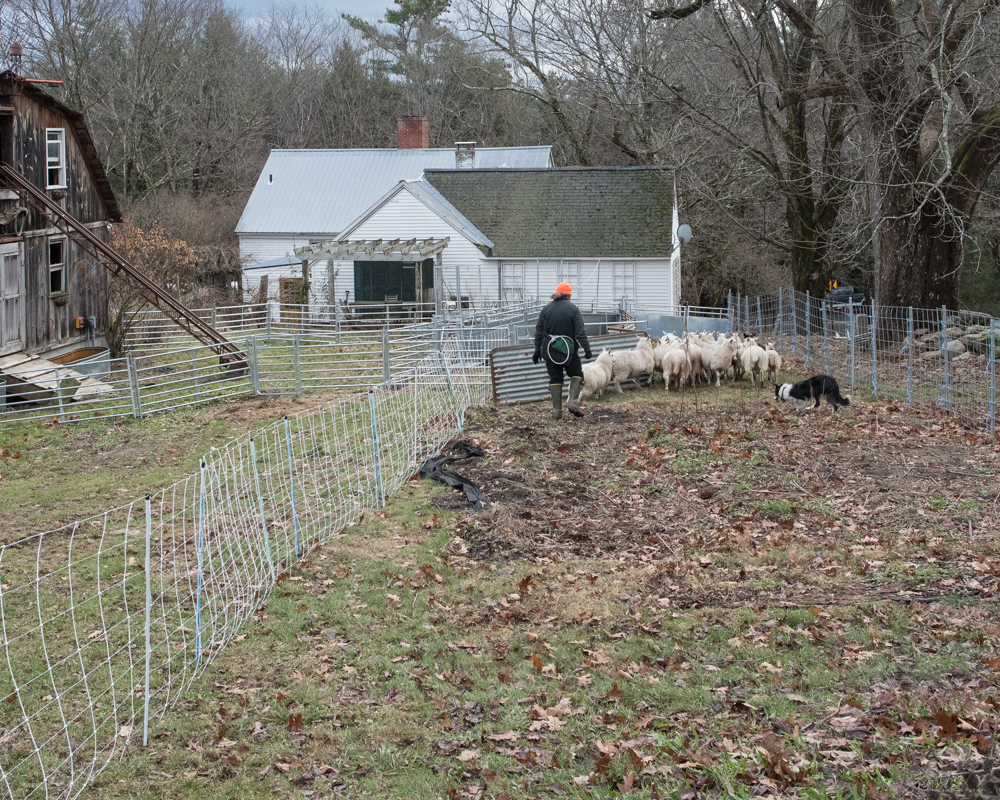
Chloe is quite skillful at working sheep, but she folds quickly under pressure. If a ewe (or god forbid, a ram) looks at her askance, she abandons her post and comes to hide behind my legs. The lambs, though, are not yet assertive enough to spook her, so she’s very happy to work with them, and Chloe’s calm nature (as opposed to Cass’s unchecked intensity) reduces stress on the flighty lambs and helps the work go smoothly. Once the lambs were in the handling system, I gave them a dose of Albendazole and weighed them again.
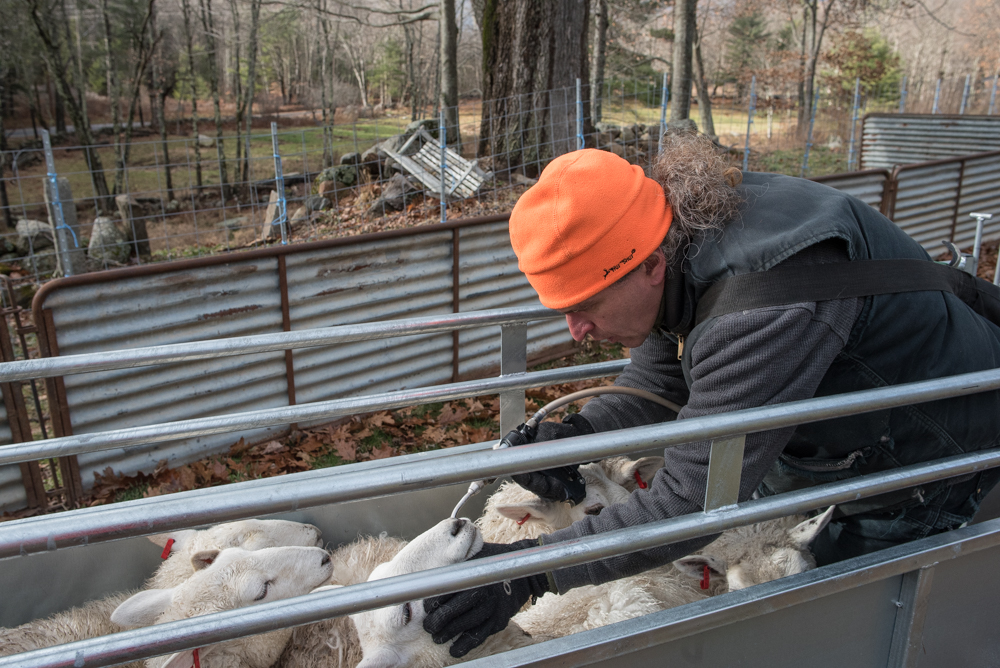
And while the lambs were in the raceway, I practiced checking their heart and lungs with my new stethoscope.
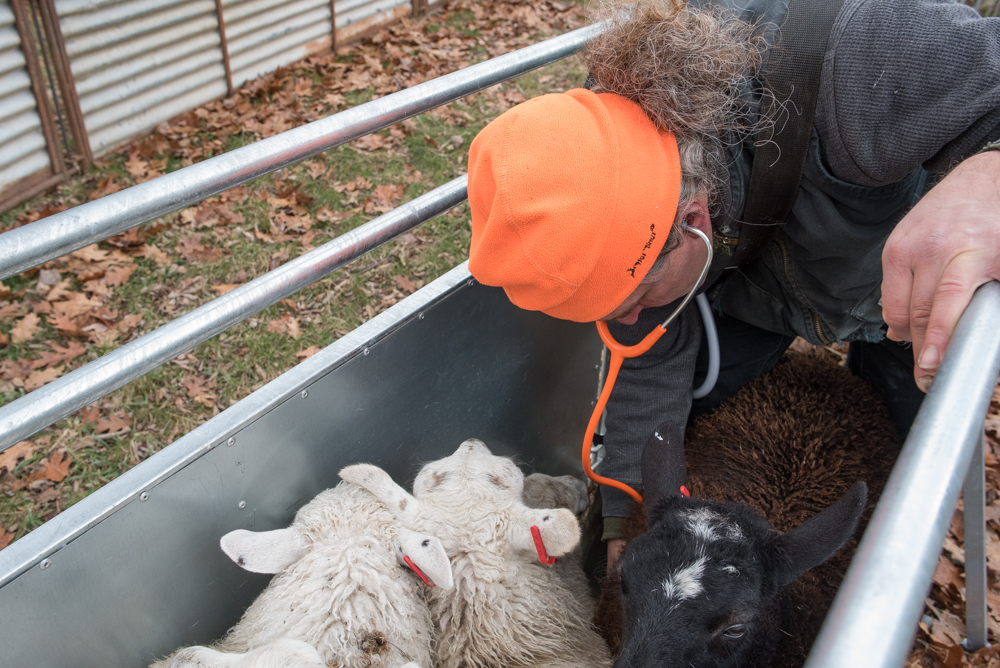
After having a ewe with pneumonia earlier this fall, Bill suggested I learn to listen to sheep lung sounds so I could better diagnose infections in the future. I was practicing on the lambs to learn what normal sheep innards sound like.
While treating the lambs for their tapeworm infestation was the primary motivation for handling them today, I was very interested to see their weights as well. I had previously weighed the lambs on 21 October and 10 November, and they gained an average of less than a tenth of a pound a day over that period. I was disappointed at this growth rate, but Bill said it wasn’t surprising, given the time of year and the fact that I had just weaned the lambs. But when I compared today’s weights with those from the 10th, I saw that the group had gained on average almost a half pound per day over those 9 days, with some gaining a full pound per day. This turnaround suggests that their growth had been significantly hindered by the roundworms that were causing the poopy butts (probabaly brown stomach worms, according to Bill), and the previous deworming had eliminated the worms and released a burst of compensatory growth in the lambs. So while I’d love to believe that I could regularly get this rate of growth with careful management and lush grass, the exceptional progress over the last nine days is probably not repeatable without another serious parasite infestation. Nevertheless, it’s very helpful to get some insight into my animals’ growth patterns.
Tagged: Albendazole, Chloe, Deb Monnat-White, deworming, handling system, irony, lambs, Levamisole, parasites, Prohibit, stethoscope, tapeworm, Valbazen, weighing
